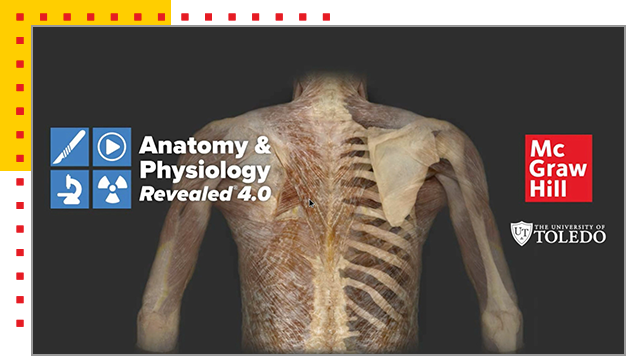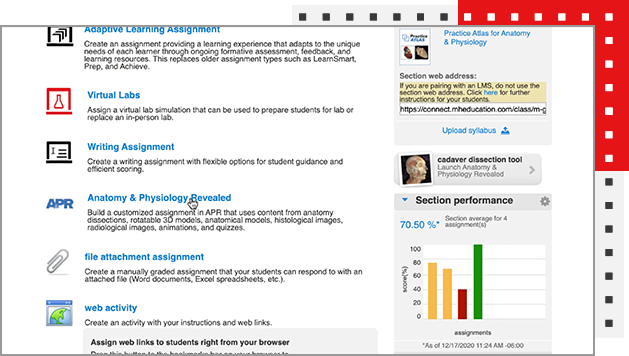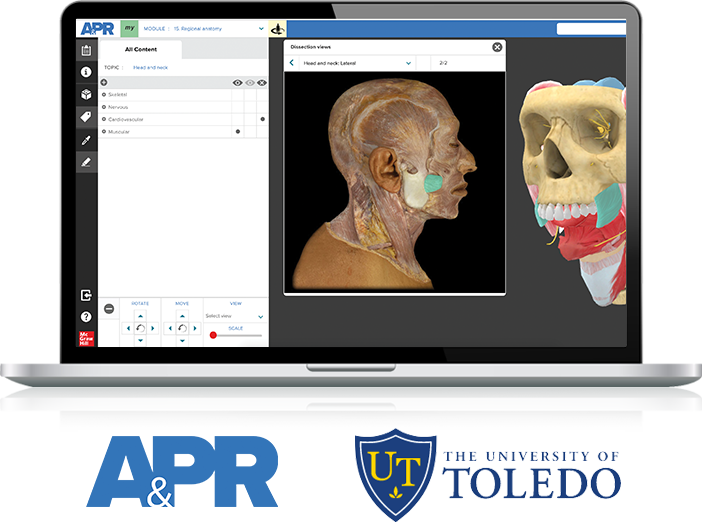My Account Details
McGraw Hill's
Anatomy & Physiology Revealed® (APR)
APR is an interactive, customizable dissection tool to enhance lecture and lab. APR contains all the systems covered in Anatomy & Physiology and Human Anatomy courses, including Body Orientation, Cells and Chemistry, and Tissues.

See how APR can work for your course.
See APR in Action
Inspiration and Implementation
Our Resource Center is full of videos and articles showcasing all that APR has to offer. Explore 3D models, dissections, animations, histology, and more. Discover how-to articles on how to use and implement APR, and listen to our A&P podcast, which covers relevant topics.
APR + McGraw Hill Connect®
Easy to Use and Mobile Friendly
We’ve included APR as a part of McGraw Hill Connect so students can easily access it anytime, anywhere. Build customized assignments and create quizzes tailored for your course. Students can also continue to access APR as a study tool. With a mobile/user-friendly interface and interactive 3D models, APR keeps your students’ attention and immerses them in the content.

See APR in Connect.
90%
More than 90% of students polled said the APR Assignments are an engaging resource for learning and studying the assigned Anatomy topics.
820 students using the APR Assignments were polled.
Find Out Why Students and Instructors Choose Anatomy and Physiology Revealed
McGraw Hill Partnership with University of Toledo
In partnership with the University of Toledo’s Center for Creative Instruction, McGraw Hill launched the first-of-its-kind virtual dissection tool in 1997: Anatomy & Physiology Revealed® (APR). APR utilizes cadaver photography to provide students with a realistic experience and the ability to practice and understand dissection 24/7—without the physical resources of a cadaver.
Throughout the years, APR has undergone updates to meet today’s students and offer a full educational experience, including animations, histology, radiology, and anatomical models. Most recently, in partnership with ISO-FORM LLC, 3D rotatable models have been incorporated into APR, giving students a glimpse at the spatial relationship between structures that may not be understood with a flat image.

